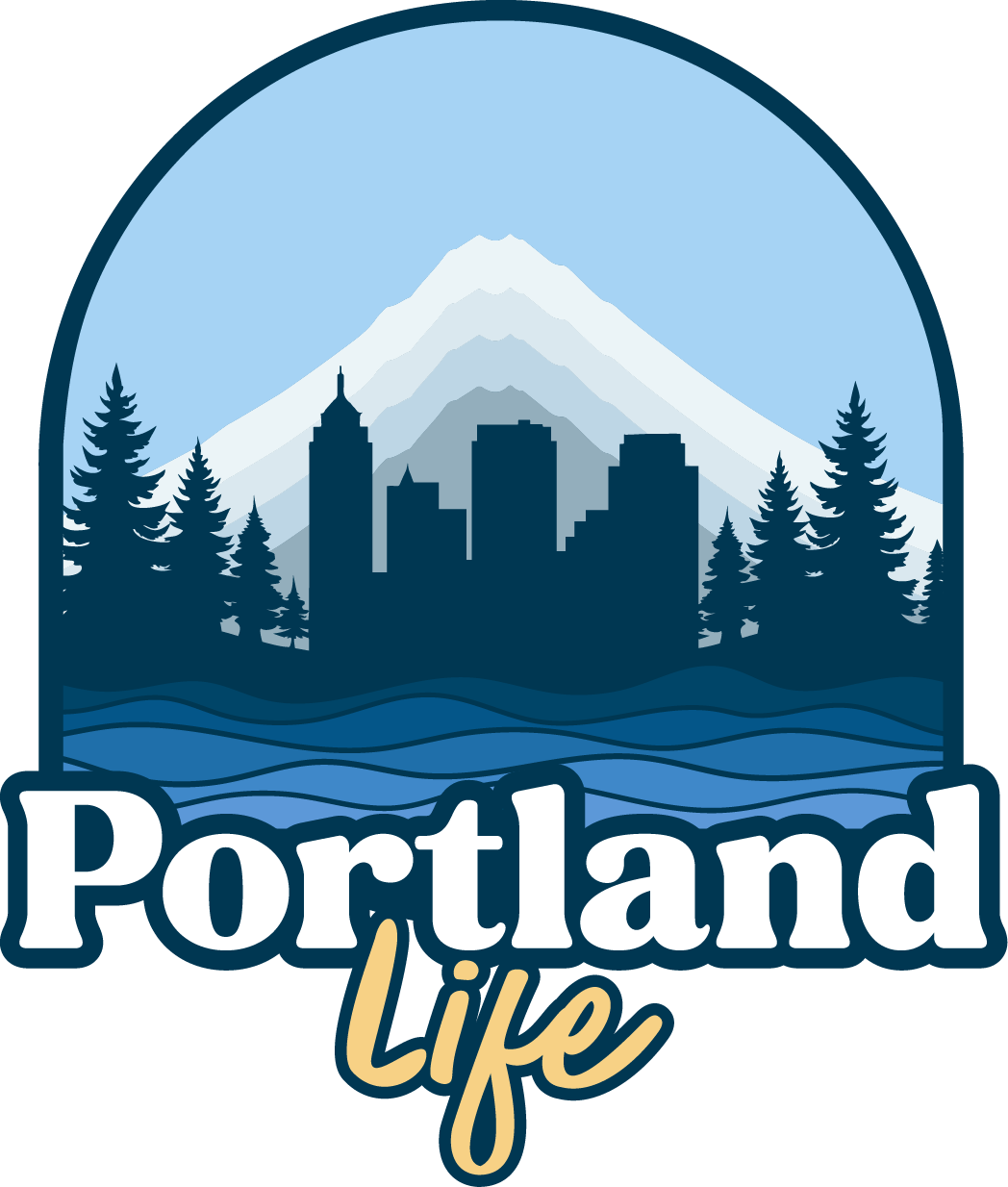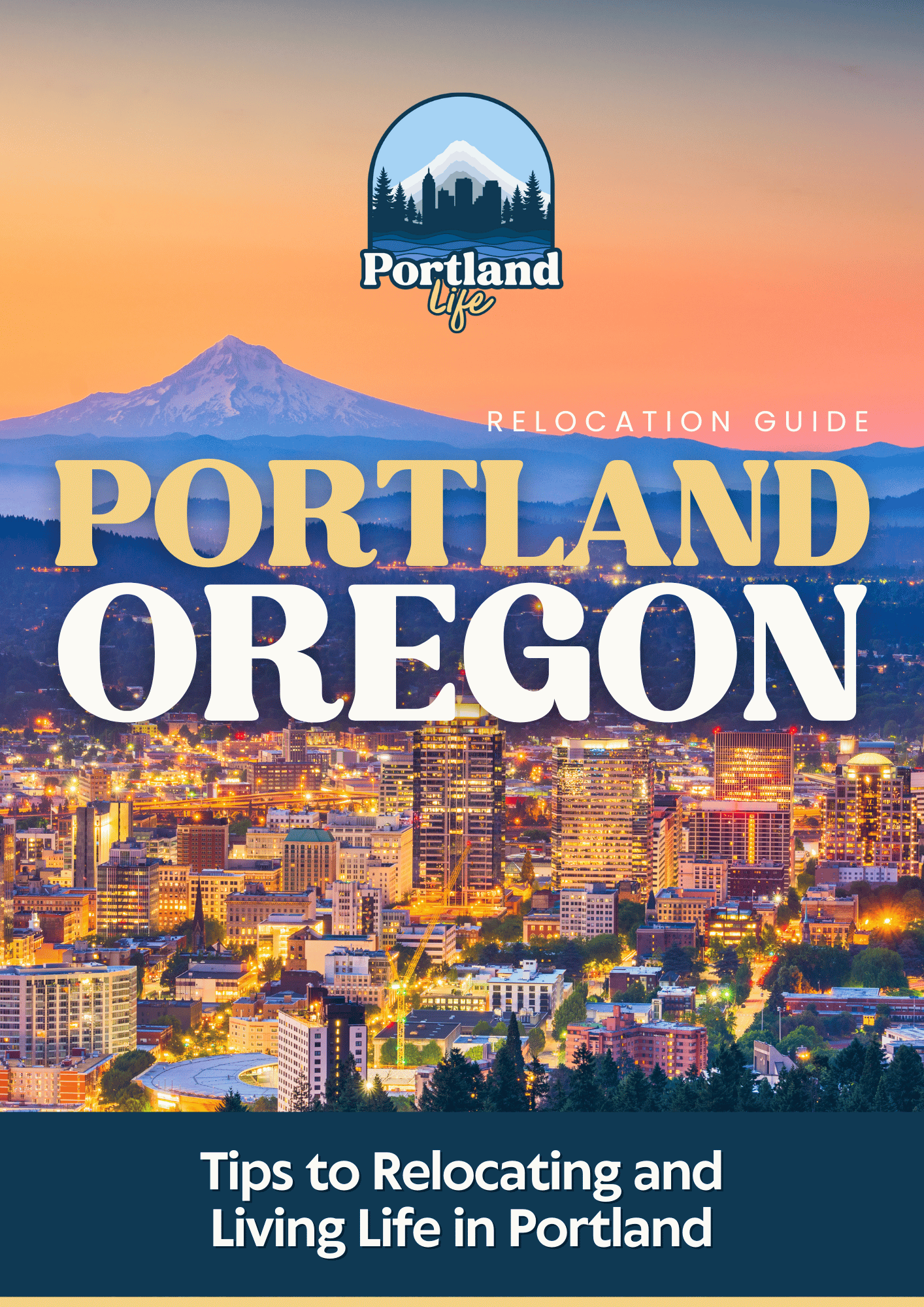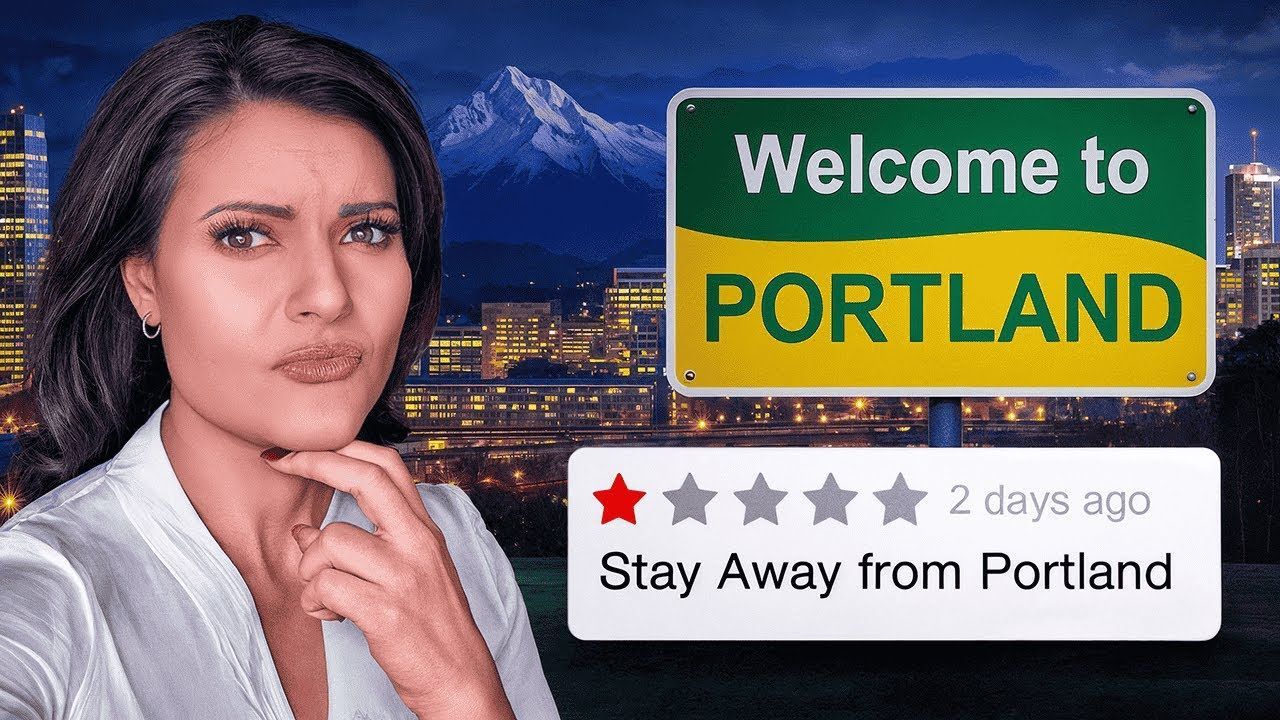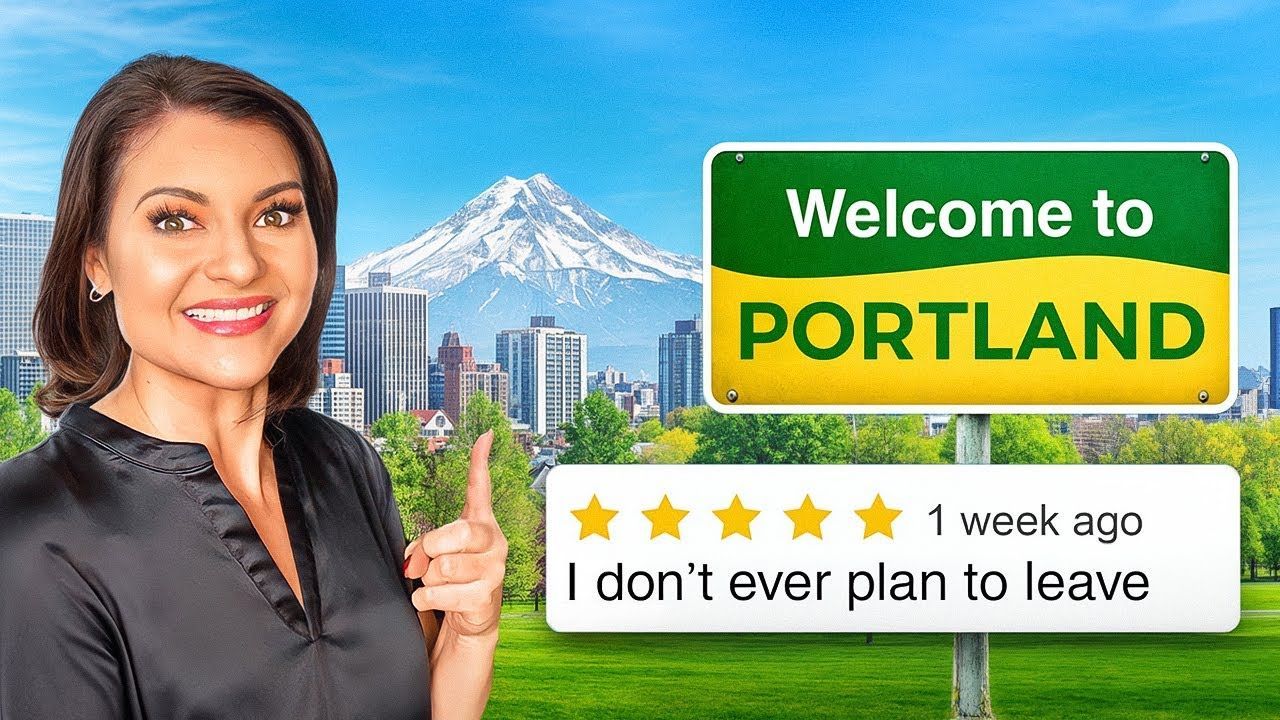MOST Walkable Portland Neighborhoods To Live [TOP 3]
If you're asking where to live in Portland, Oregon and you picture walkable urban neighborhoods only on the east side or in the Pearl District, let me correct that right away: there are truly walkable pockets on the west side too. I'm Anne from Portland Life and I teamed up with Erica to walk these neighborhoods—boots on the ground—to show you what real walkability looks like, where you can ditch your car, grab dinner, take a hike or hit the grocery store, and what trade-offs you should expect before you move. In this guide I’ll cover three top walkable neighborhoods on the west side of Portland plus trade-offs, housing types, commute realities, and buyer tips so you can decide where to live in Portland, Oregon with confidence.
Table of Contents
- How We Define Walkability in Portland, Oregon
- Walkable Neighborhood #1 in Portland: Northwest / Alphabet District (NW 23rd Corridor)
- Walkable Neighborhood #2 in Portland: Reed's Crossing
- Walkable Neighborhood #3 in Portland: Progress Ridge
- How to Evaluate Walkability When Choosing Where to Live in Portland
- Transit, Biking, and Alternative Mobility Options in Portland
- Budgeting and Pricing Guidance for Walkable Portland Neighborhoods
- Negotiation Tips and Home Search Strategies in Portland
- Case Studies: Real Buyers Finding Homes in Portland’s Walkable Neighborhoods
- Practical Checklist Before Putting in an Offer in Portland
- Final Considerations and Advice for Living in Walkable Portland Areas
- Frequently Asked Questions About Portland’s Walkable Neighborhoods
- Next Steps if You’re Serious About Moving to Portland
How We Define Walkability in Portland, Oregon
When clients ask where to live in Portland, Oregon and they mean "walkable," they usually want one or more of these traits: the ability to run daily errands by foot, a variety of restaurants and cafes within a 10–15 minute walk, access to grocery and health services, and nearby parks or trails for recreation. Some people mean "urban" walkability—city streets, nightlife and galleries—while others want suburban walkability—connected sidewalks, local retail, safe places for kids to play and a grocery within walking distance. The neighborhoods below represent both ends of that spectrum on the west side.
Walkable Neighborhood #1 in Portland: Northwest / Alphabet District (NW 23rd Corridor)
If you're looking for a classic, walkable feel that blends dining, shopping, and access to trails, NW 23rd in the Alphabet District should be high on your list when deciding where to live in Portland, Oregon. This area is minutes from downtown, about 20 minutes from the airport, and sits close to Highway 26, with easy on-ramps to 405 and I-5. That means excellent central access combined with an enduring neighborhood vibe.
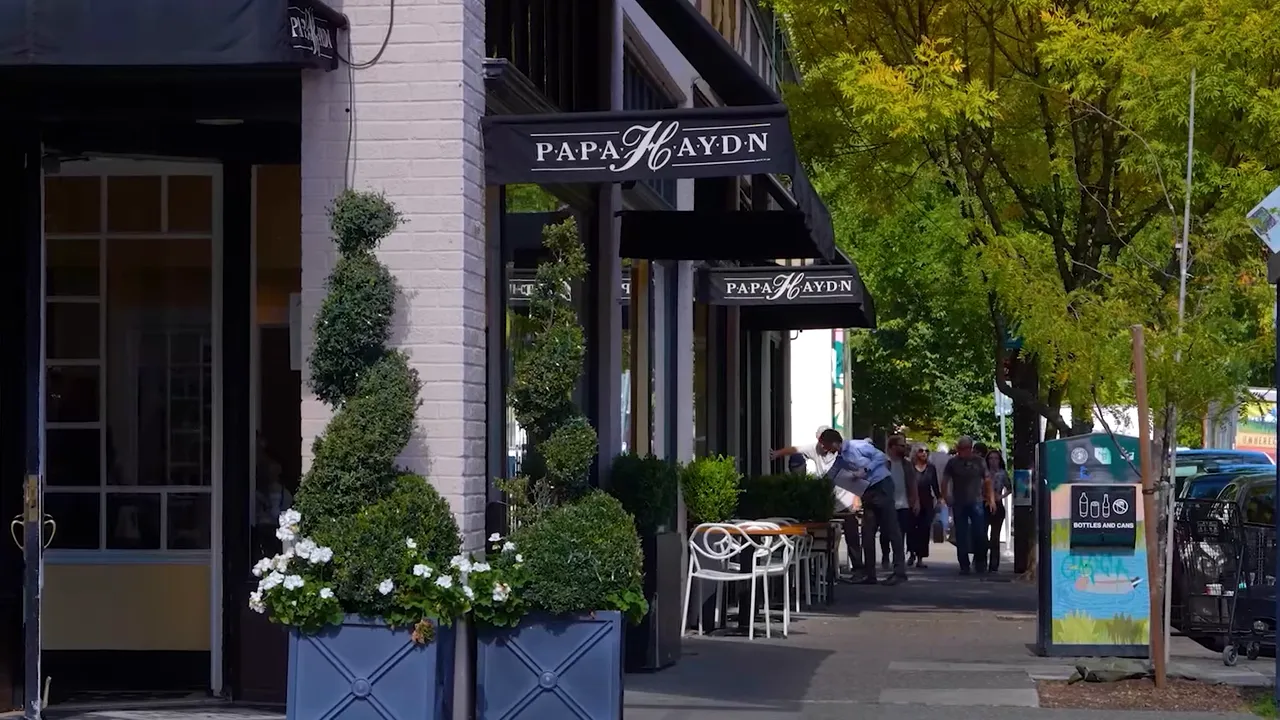
What makes it walkable?
NW 23rd is one-stop shopping—restaurants, coffee shops, art galleries, boutiques, and grocery stores are concentrated in a short stretch. You can walk to favorites like Grassa, The Matador, and Fireside; breakfast spots on 24th are famous; and there’s a density of independent retailers that make walking around feel rich and varied. More than that, the neighborhood doesn’t just offer stores: it connects directly to Wildwood Park trailheads (including the iconic Leif Erikson trailhead and the McClellan trails), which is a huge win for people who want both city amenities and quick trail access.
Housing types and price expectations
Expect a mixed housing stock: older Portland homes (Victorian and early 1900s properties), brownstones, condos, townhomes, live-work spaces with retail below and apartments over, and infill single-family homes. The trade-off: premium location equals premium price. You're often looking at mid-to-high seven figures for a turnkey single-family home in the best pockets. Condos and townhomes offer a somewhat lower entry point, but in this neighborhood you are paying for location and convenience as much as square footage.
Who is this neighborhood right for?
This area is a great fit if you're prioritizing a city-centric lifestyle: foodies, professionals who value restaurants and boutique shopping, and people who want immediate access to major trails but also the energy of urban life. We helped clients who had split priorities—one wanted country trails, the other wanted city food—and NW 23rd gave them both in short walking distance.
Trade-offs to consider
- Parking: Street parking is limited and often paid on NW 23rd; side streets fill up fast. If parking is important, prioritize properties with a usable garage or dedicated driveway. Garages in older homes may be too small for modern cars—inspect closely.
- Noise: Urban energy means nightlife, pedestrian traffic, ambulance sirens (the hospital is nearby), and activity that can last late into the evening.
- Smells and light: Restaurants mean delicious cooking smells, sometimes all day; street lights and late activity can require blackout shades if you prefer complete darkness for sleeping.
- Price: You pay a premium for convenience.
Bottom line: If your personal answer to where to live in Portland, Oregon is a place that blends food, shopping, and trail access in a compact, walkable setting—NW 23rd should be high on your list.
Walkable Neighborhood #2 in Portland: Reed's Crossing
Not all walkable neighborhoods are inner-city. Reed's Crossing in Hillsboro demonstrates how modern planned communities can deliver walkability in a suburban setting. If you're wondering where to live in Portland, Oregon but would prefer a community feel with shops and large green spaces within walking distance, Reed's Crossing may be the answer—especially if you work in the high-tech corridor around Intel.
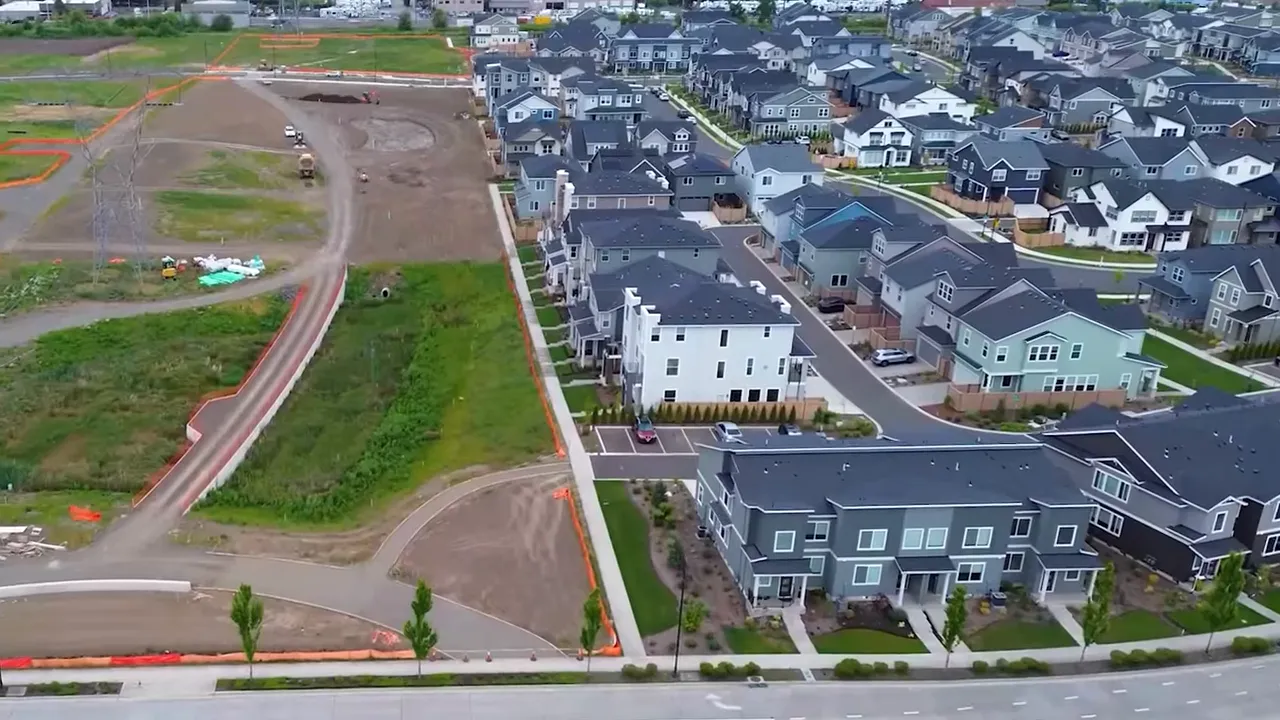
Location and access
Reed's Crossing sits roughly 30 minutes from downtown Portland and about 10 minutes from Intel and Hillsboro's high-tech corridor. Access is convenient via Highway 8, Brookwood Parkway and Tualatin Valley Highway. It’s west and slightly south of Portland, so while it’s not “close-in” it’s purposely designed so residents don’t have to drive far for essentials.
What makes it walkable?
This neighborhood was designed around retail and green space. You’ll find a Market of Choice, restaurants such as Jersey Mike’s and sushi spots, a pet store, a Pilates studio, and a Providence health facility—most within walking distance of many homes. The planners prioritized community green spaces, trails, and parks so you can be immersed in nature without a huge private yard. Sidewalks are wide, paths are well-connected, and shared green areas provide communal outdoor living.
Housing types and community design
Reed's Crossing offers a variety of housing formats: condos, apartments, townhomes (many rear-loading or carriage-style), and detached homes. The lots are typically smaller—less private yard and more shared communal space—so homeowners rely on parks and greenways for outdoor time. Think “suburbs on steroids” where the community was planned to make daily life walkable and oriented around shared amenities.
Who is this neighborhood right for?
This area is ideal for:
- Young families who want safe, planned spaces and easy pedestrian access to schools and shops.
- Tech employees at Intel or nearby employers seeking a short commute.
- Older buyers who want a comfortable, low-maintenance environment with nearby healthcare and retail.
Trade-offs to consider
- Distance from central Portland: Reed's Crossing is further out (about a 30-minute drive to downtown in typical traffic). If your work or social life centers downtown, factor in commute time when choosing where to live in Portland, Oregon.
- HOAs and maintenance fees: Planned communities often involve HOAs to manage common spaces. Those dues keep everything tidy but add to monthly costs.
- Retail identity: Expect larger national retailers and chain restaurants rather than neighborhood mom-and-pop shops.
- Parking and private space: Many homes have single-car garages or limited driveway space; townhomes may only offer balconies and shared yards. If you need private outdoor space, evaluate lot sizes closely.
- Job diversity: The immediate area is tech-heavy; if your industry shifts, you might be farther from other job centers.
Conclusion for Reed’s Crossing: If you want to know where to live in Portland, Oregon and you desire a newer planned community that emphasizes walking, green space and convenience—especially if you’re working in the tech corridor—Reed’s Crossing is worth exploring.
Walkable Neighborhood #3 in Portland: Progress Ridge
Progress Ridge is the third west-side walkable neighborhood we recommend when people ask where to live in Portland, Oregon with an eye toward suburban walkability that still connects you to job centers and city amenities. Progress Ridge sits in South Beaverton, near Murray Hill, and blends retail, a man-made lake, trails, and newer residential developments designed to be interconnected.
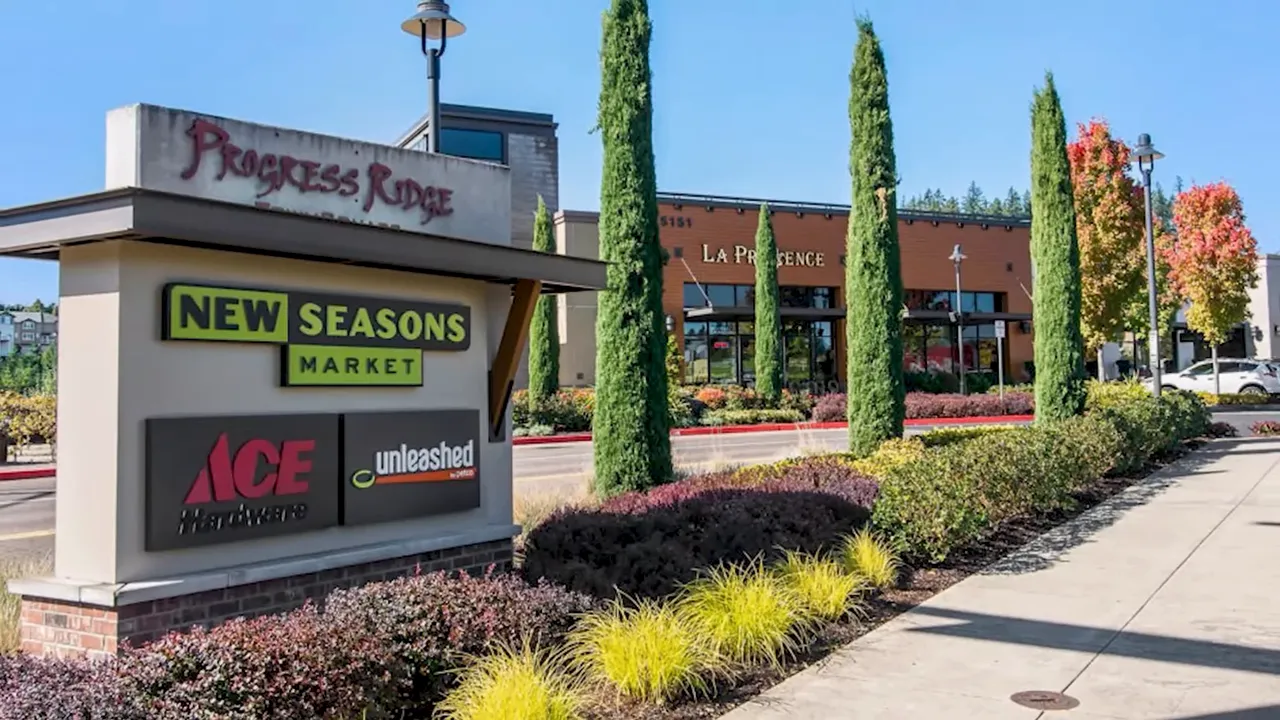
Location and access
Progress Ridge is centrally positioned on the west side with reasonable access to Highway 217 and easy back-road routes to the Beaverton and Hillsboro tech corridors. It’s about 30–45 minutes from downtown Portland depending on traffic and can be roughly an hour to the airport in peak travel times. This positioning makes it a practical hub for families and professionals who want access to workplaces across the west side without living in the denser inner-city cores.
What makes it walkable?
Progress Ridge was planned with a focus on mixed-use amenities: grocery stores (Safeway and New Seasons nearby), restaurants, a movie theater, family entertainment centers, and a lake with walking paths. Developers are actively connecting new construction neighborhoods to the commercial hub via sidewalks, trails, and bike paths. This creates an expanding network of walkable access so residents can reach retail and parks without hopping in the car.
Housing types and pricing
Around Progress Ridge you'll find townhomes, condos, and single-family homes in adjacent neighborhoods like Bull Mountain and River Terrace. New construction communities offer planned amenities like pools, trails and parks. If you want newer homes with modern layouts, you’ll find high demand here—especially among buyers seeking lower-maintenance living and community amenities.
Who is this neighborhood right for?
Progress Ridge is a fit for early families, young professionals, and people who want walkability without the density of inner Portland. It’s ideal if you want to stay connected to the city but prefer a more suburban rhythm: kids, soccer practices, short grocery walks, and local coffee shops are all within reach.
Trade-offs to consider
- Commuting bottlenecks: Access to major highways often routes through Scholls Ferry Road and other pinch points. If you commute regularly to downtown or the airport, test your commute during rush hours before deciding where to live in Portland, Oregon.
- School boundaries and identity: Addresses in the area can be Beaverton, Tigard, or Sherwood depending on exact location, and school districts vary greatly. If schools matter to you, be very careful to confirm district assignments for any property.
- Growing pains: This area continues to expand—new construction, road widening, and evolving retail can mean construction noise and changing traffic patterns for years to come.
Overall, Progress Ridge offers a middle ground—suburban, walkable, and expanding with amenities that help you avoid daily driving if you live within the right pocket.
How to Evaluate Walkability When Choosing Where to Live in Portland
Walkability is more than a Walk Score number. Here’s a practical checklist I use with relocation clients to evaluate a neighborhood’s real-world walkability before they decide where to live in Portland, Oregon.
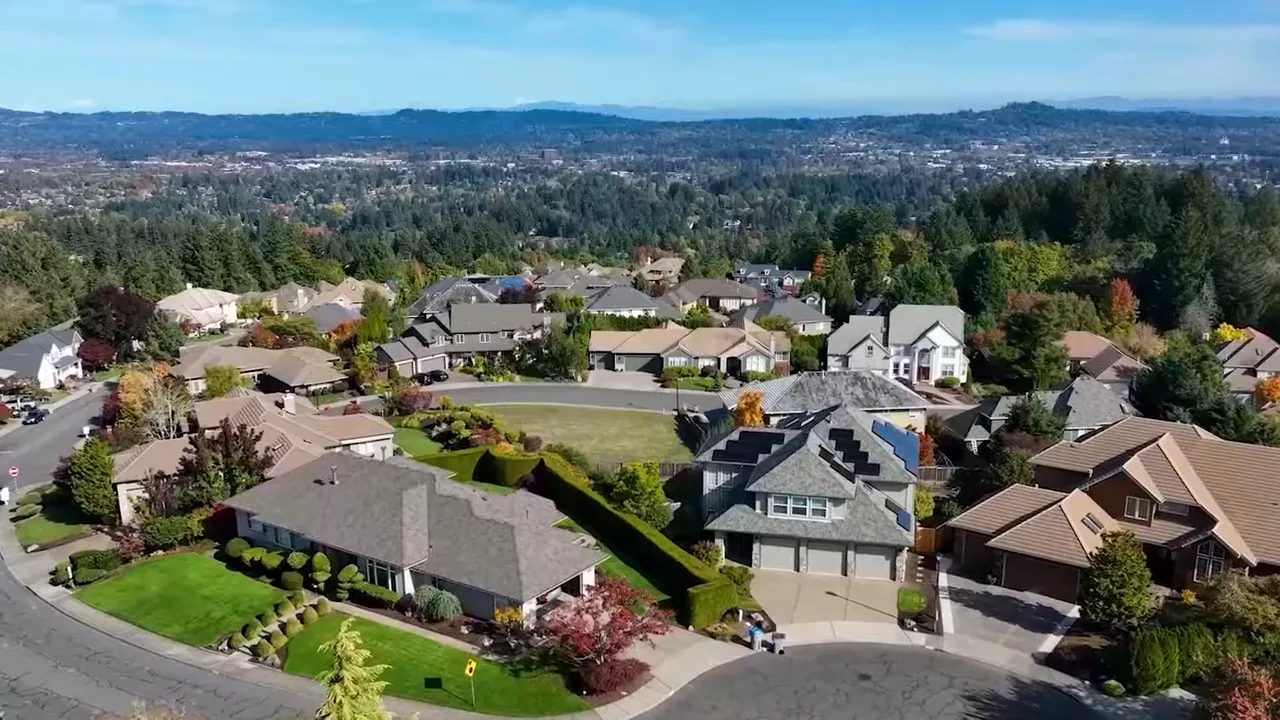
- Daily errands by foot: Can you get to a grocery, pharmacy, or cafe within a 10–15 minute walk?
- Transit access: Are bus or MAX light rail stops within walking distance for travel without a car?
- Recreation options: Are parks, trails, or greenways within walking range?
- Sidewalks and safety: Are sidewalks continuous and well-lit? Are crosswalks safe?
- Diversity of destinations: Do nearby options include multiple restaurants, shops, and services rather than just one grocery store?
- Evening activity: If you value nightlife or want quieter evenings, observe a neighborhood at different times (weekday daytime, evening, weekend).
- Parking realities: If you own a car, inspect parking options—private garage, driveway, or permit/resident parking.
- Noise and light: Visit the property after dark to judge street and commercial lighting and late-night noise levels.
Transit, Biking, and Alternative Mobility Options in Portland
When choosing where to live in Portland, Oregon, consider public transit and bike routes as part of your walkability equation. The west side neighborhoods covered here offer varying transit options. NW 23rd is close to downtown transit hubs; Reed's Crossing and Progress Ridge are developing stronger connections with bus routes and bike infrastructure. If you plan to bike regularly, check for bike lanes, connectivity to regional trails, and bike storage at home.
Budgeting and Pricing Guidance for Walkable Portland Neighborhoods
Price expectations differ dramatically based on neighborhood type:
- NW 23rd / Alphabet District: Premium pricing. Expect mid-to-high seven-figure single-family homes for move-in ready properties; condos and townhomes can be your entry point but still command a premium for location.
- Reed's Crossing: Newer planned community pricing. You’ll find condos, townhomes and more modestly sized detached homes with HOA dues. Price-to-value often sits well for families seeking low maintenance living.
- Progress Ridge: Mixed price points with strong new-construction demand. Townhomes and new single-family homes are popular and sell quickly—expect competitive markets.
Negotiation Tips and Home Search Strategies in Portland
- Work with relocation experts: When deciding where to live in Portland, Oregon, partner with agents who know the neighborhoods' micro-market differences, school boundary quirks, parking realities and walkability nuances.
- Prioritize must-haves: For many buyers, a one-car garage in a walkable neighborhood is a top priority. For others, proximity to trailheads or a grocery within walking distance is essential. Rank your needs.
- Visit at multiple times: See morning rush, lunchtime, evening and weekend vibes. Noise, parking, and lighting can change dramatically.
- Test commute: Do at least two test commutes during typical work hours to understand true travel time.
- Check HOA rules and dues: In planned communities, understand the obligations and restrictions before you commit.
- Inspect garage sizes: Older garages might not fit modern vehicles. Measure before assuming space will work for you.
Case Studies: Real Buyers Finding Homes in Portland’s Walkable Neighborhoods
Case study 1: The "foodie + hiker" couple. One partner loved long trail runs and quiet green spaces, the other loved restaurants and shopping. We found them a NW 23rd-adjacent property that placed both the Wildwood trail network and NW dining within easy reach. They accepted higher price for the convenience balance.
Case study 2: Tech professionals with a dog. A couple moving to Intel wanted a short commute, established shopping, and greenspace for their dog. Reed's Crossing gave them a compact home, daily amenities and wide walking paths. HOA dues were a trade-off they accepted for low maintenance living.
Case study 3: Young family seeking central west-side access. They wanted construction-era new housing, a lake, good schools and short drives to multiple job centers. Progress Ridge and adjacent new builds offered planned amenities, trails and a family-friendly environment.
Practical Checklist Before Putting in an Offer in Portland
- Walk the neighborhood during morning, mid-day, evening and weekend.
- Test commute routes during high-traffic times.
- Confirm school boundaries for the exact property address.
- Verify parking: garage height, driveway length, and resident permit rules.
- Read HOA CC&Rs (if applicable) and budget for dues.
- Inspect yard size and private outdoor space vs. communal park reliance.
- Check for upcoming developments or road projects that could change noise/traffic.
- Check transit stops and bike lane connectivity within a 10–15 minute walk.
Final Considerations and Advice for Living in Walkable Portland Areas
Where to live in Portland, Oregon will depend on the lifestyle you want. Do you crave a dense, energetic environment where you can walk to dinner and galleries? NW 23rd delivers that in spades. Want a newer, low-maintenance suburban community where you can walk to a grocery and parks? Reed's Crossing and Progress Ridge offer truly walkable living with different blends of retail and green space.
Walkability is not one-size-fits-all. The west side options we explored show the range: classic urban walkable streets and modern planned communities that deliver walkability with suburban comfort. If you're relocating, work with agents who walk these neighborhoods, test commutes, and understand local school boundary quirks. That experience will save you time, money and frustration when choosing where to live in Portland, Oregon.
FAQs About Portland’s Walkable Neighborhoods
Which west-side neighborhood is best if I want both trails and restaurants?
Northwest (Alphabet District / NW 23rd) is the top choice. It uniquely pairs dense dining and boutique shopping with trailheads into Wildwood Park. If you asked where to live in Portland, Oregon for this mix, NW 23rd would be a leading candidate.
Are planned communities like Reed's Crossing actually walkable?
Yes, they can be. Reed's Crossing is designed with centralized retail, green space and sidewalks so many daily needs can be met without a car. When choosing where to live in Portland, Oregon, consider whether you value private yard space or communal green spaces instead.
How important is garage size in NW neighborhoods?
Very important. Older homes often have garages built for cars of decades past. If parking is a must, measure garages and driveways and prioritize properties with usable, modern-sized garage space or room for an off-street parking spot.
What costs should I expect beyond mortgage in planned communities?
HOA dues, special maintenance assessments, and potentially fees for shared amenities. When considering where to live in Portland, Oregon—especially in newer planned neighborhoods—factor in monthly HOA dues as part of your housing budget.
Do west-side walkable neighborhoods have good transit options?
It varies. NW 23rd is closer to downtown transit networks. Reed's Crossing and Progress Ridge are more car-oriented but are adding bus connections and bike infrastructure. If public transit accessibility is a requirement, test routes and stops during your visits.
What’s the best way to test a neighborhood before moving?
Walk the neighborhood at multiple times of day, test commute routes, spend time at local cafes, and observe parking and noise during peak hours. Work with relocation-savvy agents who can show “boots on the ground” realities.
Next Steps if You’re Serious About Moving to Portland
If you’re wondering where to live in Portland, Oregon and want help narrowing choices based on commute, schools, price point, and lifestyle, reach out to agents who are relocation experts. We walk these neighborhoods, know the quirks—like school boundary oddities in Progress Ridge and garage size surprises in NW 23rd—and we can tailor home searches to your priorities.
Before you go, take a copy of our FREE relocation guide for Portland to help you map neighborhoods, budgets, and commutes. Good decisions come from seeing places in person, testing commutes, and understanding trade-offs—then matching those to your priorities for where to live in Portland, Oregon.
Ready to get started? If you want neighborhood-specific advice, school boundary checks, or a prioritized list of walkable properties that fit your needs, reach out and we’ll walk the neighborhoods with you—literally.
